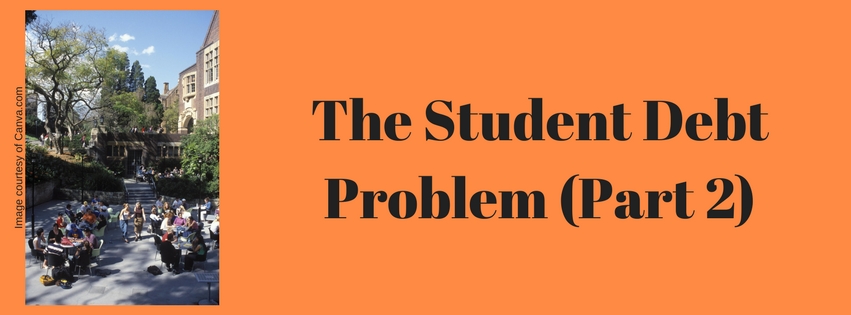Earlier this week we brought you the first installment to our two-part series covering the rising issue of student debt in America, where we discovered how school loans became so expensive – an article you can find here.
Today, we bring you Part Two, in which we follow the money to see just who profits off of each loan…
Where Does the Money Go?
For starters, a large majority of each loan goes towards the colleges themselves – funding tuition, dorm costs, etc. But ever since Congress took a step back from student-aid, however, allowing private companies a larger say with less restrictions, the entire educational system has turned into a giant profit wheel. In fact, through higher interest rates, upcharges, and hidden fees, nearly everyone on Wall Street now has a share in the earnings.
As a student loan is nearly the only consumer debt that can’t be discharged under bankruptcy, banks now lock in a steady income of interest rates and penalties, while debt collectors can also cash in on commissions earned from overdue payments.
Meanwhile, the government, through a policy known as Administrative Offset, can potentially withhold up to 15% in federal payments to students behind on their debts (including income such as tax refunds, Social Security, and disability checks), in addition to profiting off of the interest rates of its own government-held loans. According to the Government Accountability Office, these federal loans could bring the government up to $66 billion in income, just from those issued between a five-year period.
Sallie Mae itself created its own off-branch company called Navient, designed to only facilitate private – albeit more profitable – loans, while investors everywhere are swooping in for their own piece of the student loan pie.
And the kicker? Because so much money is feeding into the private sector, versus state governments where it belongs, colleges everywhere are forced to increase tuition costs to make up for the lack of school funding – resulting in a larger debt, that breeds yet more interest and late fees.
It’s an endless cycle for students, who are met with more and more compiled debt at every turn – leaving us with the final question: what are we going to do about it?
(This post was a continuation of Part One (link) and was based off of the Reader’s Digest article written by James B. Steele and Lance Williams, issue 12/17 – 1/18.)
